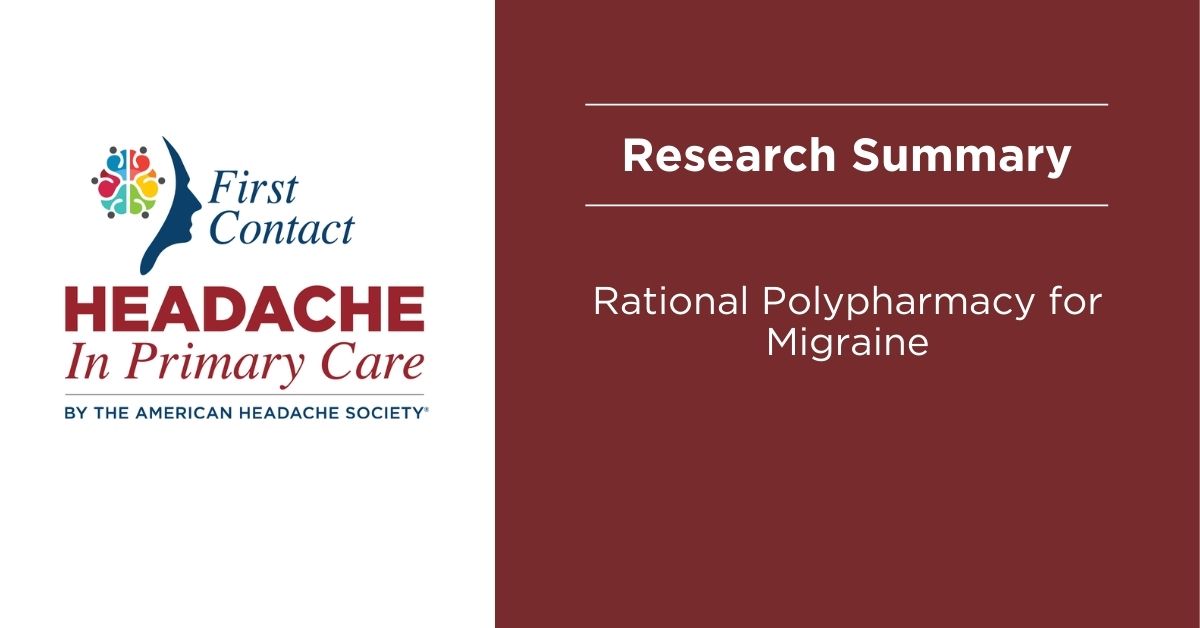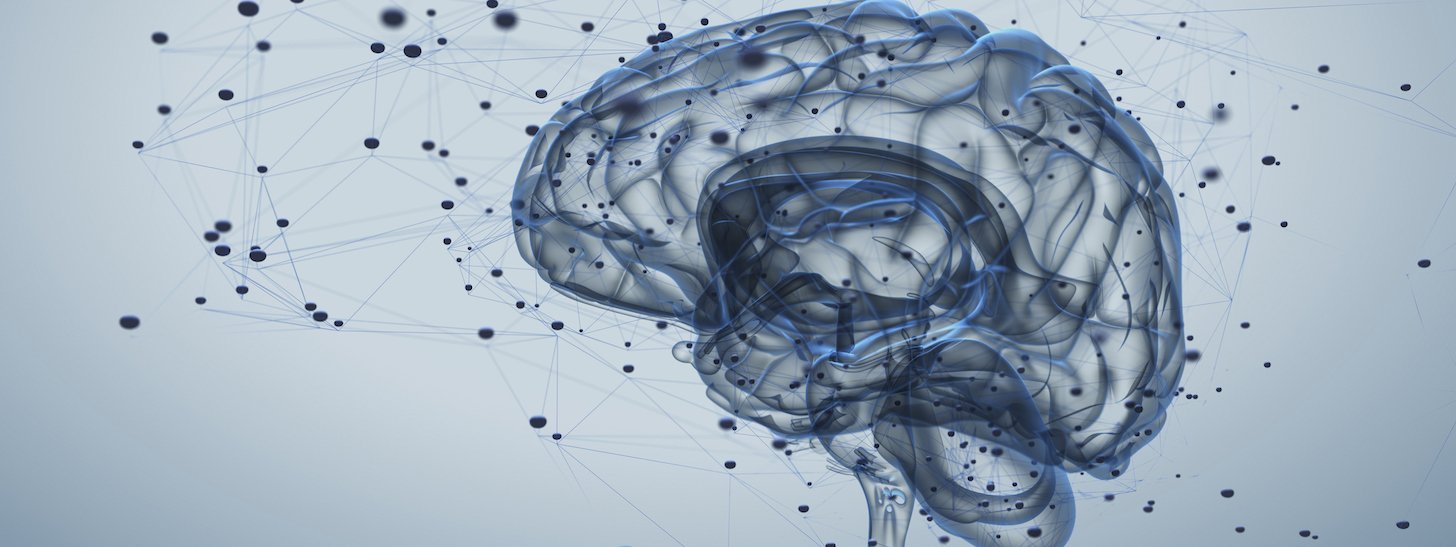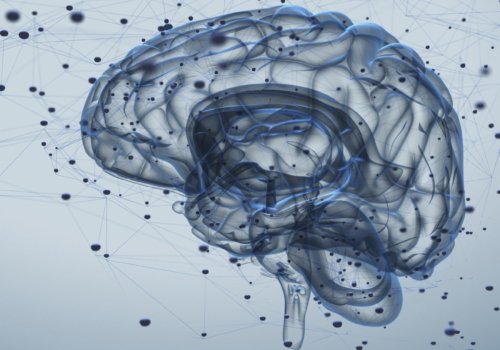
Research Summary: Rational Polypharmacy for Migraine
Summarized by Anna Pace, MD
Treating migraine is a complex issue, as there is no cure nor is there a strictly defined way to manage the disease. The good news is, there is no shortage of methods to utilize in prescribing care for patients. A multitude of preventative and acute therapies are available to healthcare professionals, but what can be done for individuals whose migraine attacks are intractable or refractory to monotherapy treatment? In such cases, polytherapy may be a viable option to consider as part of the treatment regimen.
This month, the First Contact – Headache in Primary Care team summarized Rational Polypharmacy for Migraine.
Study Overview
- Despite the availability of newer therapies developed specifically for migraine, many patients continue to have high disease burden.
- In these situations, polytherapy may be prudent but must be rational.
Advantages and Disadvantages of Polypharmacy
- Monotherapy is a priority for migraine management as it simplifies the treatment regimen, minimizes side effects and drug interactions, and can enhance adherence.
- However, less than 50% of patients with migraine have at least a 50% reduction in attack frequency with monotherapy.
- Additionally, a single acute treatment may not provide rapid, dependable, and complete relief.
- Advantages:
- Potentially better outcomes and response rates due to additive or synergistic effects.
- Lower doses may be effective and better tolerated when used in combination therapy.
- Disadvantages:
- Potential increase in drug-drug interactions and adverse events.
- Increased risk of non-adherence if the regimen is complex.
- Advantages:
- Data providing guidance is limited.
Polypharmacy in Acute Migraine Treatment
- Effective acute treatment is crucial since it may prevent disease progression.
- According to the 2021 American Headache Society consensus statement, an acute therapy should:
- lead to rapid and consistent freedom from pain and associated symptoms without recurrence
- restore ability to function
- rarely require repeat dosing
- promote self-care
- reduce subsequent use of resources, and
- result in minimal to no adverse effects
- If monotherapy yields suboptimal outcomes, rational polytherapy should be considered but must avoid:
- conflicting/overlapping mechanisms of action
- potentially dangerous drug-drug interactions
- Evidence-based and expert opinion examples:
- Triptan + NSAID – combination better than each agent alone
- Adjunctive dopaminergic antagonist – treats nausea and headache, as well as potentially promotes gastric motility and absorption
- IV prochlorperazine + dihydroergotamine – in the appropriate setting
- More studies are needed to determine the safety and efficacy of combining new and old agents; this is of growing interest with some studies already completed.
- Ubrogepant + acetaminophen – 40% increase in peak serum concentration of ubrogepant, decrease in peak serum concentration of acetaminophen by 24%
- Ubrogepant + sumatriptan – doubled median time to maximal plasma concentration of ubrogepant, reduced the mean maximal plasma concentration of ubrogepant by 24%
- Rimegepant + sumatriptan – <30% reduction in peak serum concentration of rimegepant
- Caution: Do not use triptans, ditans, and ergots within 24 hours of each other because of the theoretical increased risk adverse events due to overlapping mechanisms (most concerning is potential for vasospasm with ergots and triptans).
- Take home points: not all migraine attacks are equal; individualizing combination treatments is necessary; using a stratified treatment approach, often with a rational combination; and matching the therapeutic approach to the attack intensity and features, with the goal of improved outcomes.
Polypharmacy in Preventive Migraine Treatment
- Single agents should be used whenever possible, but using multiple agents from at least two different preventive classes may address management gaps.
- Simultaneous treatment of comorbid conditions is separate from true polytherapy in the prevention of migraine but can be tailored for rational polypharmacy (e.g., use nortriptyline + topiramate in a patient with migraine and insomnia).
- Evidence-based and expert opinion examples:
- Open label studies support propranolol + divalproex sodium (56% response rate) and propranolol + topiramate (62% response rate) after monotherapy failure
- A randomized trial supports topiramate + nortriptyline (78% response rate) over monotherapy (37% response rate)
- OnabotulinumtoxinA + CGRP monoclonal antibodies (mAbs) – preclinical and clinical data suggest potential for synergy due to distinct mechanisms of action
- Gepants + mAbs – might lead to greater efficacy, but there are concerns that efficacy or tolerability could suffer due to shared mechanisms of action
- Older oral agents + mAbs – may lead to a reduction in monthly migraine days and days when acute migraine medications are needed
Implications for Primary Care Clinicians
- Polypharmacy in the treatment of migraine can be controversial, but it may be best for certain patients.
- Polytherapy utilizing medications with different mechanisms of action is a viable option for those patients with high disease burden on monotherapy.
- Consider incorporating polytherapy after a detailed discussion of risks and benefits.
- Remember that polytherapy can also include adding behavioral therapy or using devices, thus circumventing some of the concerns inherent to polypharmacy.
This summary is part of the First Contact — Headache in Primary Care initiative, an American Headache Society program that provides educational resources to empower healthcare professionals and improve headache and migraine care. We encourage providers in all stages of their careers to visit our homepage to access educational tools to improve patient care.


